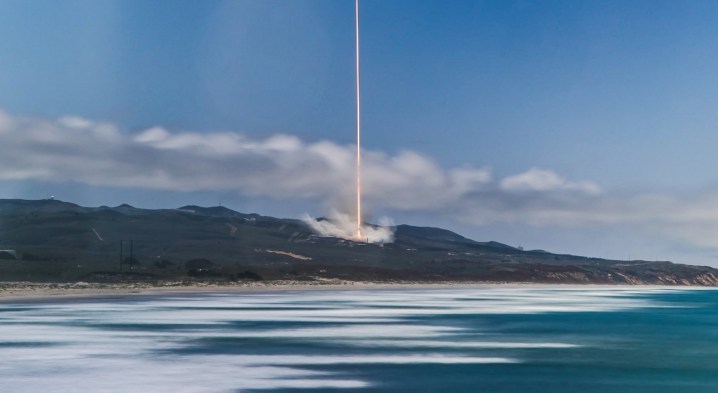
Update 5/23/2018: SpaceX logged yet another successful mission on Tuesday, blasting seven satellites into orbit aboard a Falcon 9 rocket around 12:47 PM PST. However, while the company did achieve its primary objective (to safely deliver its payload into space), failed to achieve its secondary objective: recovering a reusable section of the rocket known as the fairing.
While SpaceX has a pretty good track record for recovering first-stage rocket boosters, it has yet to perfect the fairing recovery process. Catching a fairing (the “nose cone” that protects the payload during launch) is completely different than landing a rocket. Unlike SpaceX’s fancy reusable boosters, fairings aren’t capable of controlled descent — so SpaceX has to chase them down and try to catch them as they erratically plummet out of the sky.
To do this, SpaceX currently uses a boat named Mr. Steven, which is equipped with a giant net, and a GPS system that tracks the fairing as it falls. SpaceX offered viewers a brief glimpse of the craft yesterday before liftoff, but unfortunately did not stream the catch attempt it made shortly thereafter. Toward the end of the webcast, it was announced that Mr. Steven missed the catch — but rest assured that this won’t be the last time SpaceX gives it a try.
5/22/2018: Less than two weeks have passed since SpaceX’s last rocket launch, but today the company will attempt to break free from the shackles of gravity and reach orbit once again. Barring any delays, SpaceX is set to launch yet another Falcon 9 rocket today at 12:47 PM PST from Space Launch Complex 4E at Vandenberg Air Force Base, California.
This time, the rocket will carry payloads for two different customers: A set of five communications satellites from Iridium, and two gravity-measuring satellites built in a partnership between NASA and the German Research Centre for Geosciences.
Today’s launch will differ from SpaceX’s previous launches in three key ways. First and foremost, the company isn’t using its new Block 5 Falcon 9 variant. Instead, the payload will be delivered into orbit on an older Block 4 version, which was previously used (and successfully recovered) four months ago during the Zuma mission.
Second, SpaceX will not make any attempt to recover the rocket’s first stage this time around. This deliberate move is part of the company’s ongoing effort to phase out its Block 4 rockets and transition to using the newer, more advanced Block 5 fleet for all future launches. Block 5 rockets (one of which SpaceX used on its last mission) boast a range of upgrades that not only make them more efficient, but also make the Falcon 9’s first stages easier to reuse after recovery.
Don’t worry though — despite the fact that today’s mission won’t include a spectacular rocket landing, the company will attempt to recover a different part of the rocket: half of the payload fairing, otherwise known as the nose cone shell that protects all the expensive stuff SpaceX is trying to put into Space
This is a very tricky endeavor. An array of thrusters and parachutes will help guide the partial fairing down towards Mr. Steven, a landing ship that will attempt to cradle the nose cone and prevent it from tumbling into the ocean. If this recovery proves successful, it will mark a first for the SpaceX team. Previous attempts have just barely failed.
Weather is favorable today, so a launch looks likely. As usual, the SpaceX webcast will kick off 15 minutes before scheduled takeoff.



